
by California Casualty | Auto Insurance Info, Safety |
Fall brings cool, crisp weather, and beautiful colors, but it also brings its share of driving hazards. Autumn is damp and foggy in many places and temperatures tend to drop at night. These seasonal changes can impact road conditions.
Here’s what you need to know to stay safe when driving this fall.
Tip #1: Be aware of changing light patterns during shorter fall days.
Fall days naturally are shorter. The sun moves closer to the horizon, creating increased glare during sunrise and sunset hours. Once we end Daylight Savings Time on November 7, it will get darker earlier in the evening. “While we do only one-quarter of our driving at night, 50% of traffic deaths happen at night,” according to the National Safety Council. That’s because depth perception, peripheral vision, and color recognition are reduced in the dark.
-
- Keep a pair of sunglasses in your car for times when the sun’s blinding glare can obstruct your vision. In the fall, this often happens during morning and evening rush hour.
- Keep your windshield clean so that dirt streaks don’t contribute to the glare.
- Be especially careful driving in neighborhoods during dusk or dawn hours. The low light can make it harder to see children playing or people walking their dogs.
- At night, the glare of approaching headlights can be blinding. Do not wear sunglasses as they can obstruct your vision at night. The best strategy is to avoid looking directly into the lights of oncoming traffic. Glance toward the right and look for the white painted road line.
Tip #2: Slow down for leaves, which can make roads hazardous.
Autumn leaves are beautiful to behold but they’re also dangerous. Driving on wet leaves is as slippery as driving on ice. Leaves may be slippery when wet but If temperatures fall, those wet leaves actually become icy. Even dry leaves are dangerous. They can reduce traction and cause skidding. They can cover up road markings and potholes.
-
- Clean leaves off your windshield so they don’t get stuck in your wiper blades and block your vision.
- When driving on roads with leaves, slow down. Imagine hidden potholes under the leaves, which you would not want to hit at higher speeds.
- Give yourself plenty of distance between yourself and the car in front to avoid braking suddenly on a slippery surface.
- This is prime time for leaf gazing. Be aware that some drivers will have their eyes on the colorful fall foliage, rather than focusing on the road.
- Never drive through a leaf pile. Children love to jump and hide there.
- Do not park over a pile of leaves. It could create a fire hazard from the heat in your exhaust system.
Tip #3: Take care to see, and be seen, in fog.
Chilly fall mornings can create foggy conditions which reduce your visibility and the perception of distance when driving. You can take measures to see and be seen in fog.
-
- Keep your headlights on, even during the daytime in fog. Use fog lights if you have them. They are designed to shine low along the road.
- Avoid using your high beams. They do not work well in dense fog and will create a glare, making it harder for you to see.
- Keep moving at a safe speed, but put lots of distance between yourself and other drivers.
- Reduce distractions so you can focus completely on the road.
- Use your windshield wipers and defroster to keep your glass clear. Set your defroster to warm to help dry out any moisture.
- If you need to, pull over to a safe spot. However, you will want to turn off your lights. In a fog, other drivers may see lights and think you are in a traffic lane. That could cause a collision.
Tip #4: Slow down on bridges and overpasses, which can freeze before roads.
As overnight temperatures drop below freezing, you can expect morning frost. That frost can impact your commute.
-
- Warm-up your car and clear away any morning frost on your windshield and windows before driving.
- Slow down on bridges, overpasses, and shaded areas. Like the signs say, they really do freeze before roads.
- Be aware of black ice. It doesn’t have to be snowing to create those slippery surfaces.
Tip #5: Be alert for deer at dawn and dusk.
Fall is breeding season for deer. That means you may see them more as they travel to find mates. You are more likely to hit a deer in November than at any other time of year, according to the Insurance Institute for Highway Safety. An adult deer can range from 150 to 300 pounds, so hitting a deer can cause significant damage to your car as well as kill the animal.
-
- Deer are most active during dusk and dawn. Be watchful of the side of the road movement during those times, especially in areas where there are deer crossing signs.
- Deer travel in groups. If you see one cross the road, chances are there are others following.
- If you see a deer, avoid swerving. Try to come to a controlled stop and wait for the animal to pass by. Put on your hazard lights to alert other drivers that you are stopped.
Tip #6: Make sure your vehicle is in good working order.
Keeping your vehicle in top condition will help you navigate the challenges of fall driving more easily.
-
- Check your vehicle’s headlights, turn signals, and tail lights to make sure they are working. Make sure your headlights are aligned.
- Check your car’s wipers and replace the blades if they are showing signs of wear.
- Check your car’s heating system to make sure it’s working.
- Make sure your tires have enough tread and are inflated. As temperatures rise and fall, your car tires may expand and contract. This causes loss of air pressure. You will want your tires to be inflated to manufacturer specifications. Check your owner’s manual.
- Finally, make sure you have the proper car insurance. Coverage will give you peace of mind should anything happen.
This article is furnished by California Casualty, providing auto and home insurance to educators, law enforcement officers, firefighters, and nurses. Get a quote at 1.866.704.8614 or www.calcas.com.
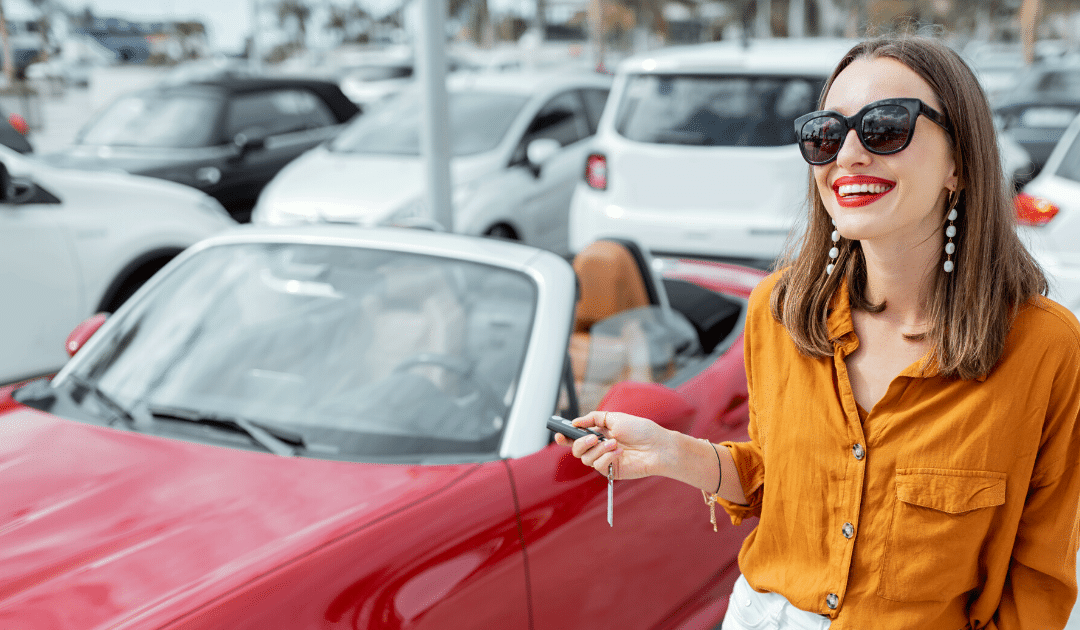
by California Casualty | Auto Insurance Info |
Thinking about renting a car for your next getaway? Much like insurance, rental car contracts can seem complicated, if you don’t know what to look for. Understanding what you need and what you don’t will help you save on your rental—and use that extra savings for vacation fun.
First, let’s take a look at the basics of a rental car contract.
Age: You must be 25 or older to rent a car in the U.S. You can still rent a car if you are aged 21-24, but you will pay an extra fee. Similarly, you may need to pay a surcharge if you are age 70 and above.
Additional drivers: You may pay a fee for each driver beyond the main driver. However, rental car companies often will let spouses drive for no additional fee.
Classification of car: The daily or weekly rate depends on the type of car that you choose. Choices range from economy, the least expensive, to luxury, and more. Here’s a quick rundown of the basic sizes:
-
- Economy generally describes a small sedan with 2-4 doors and seating for 4.
- Compact is a slightly larger sedan with 4 doors and seating for up to 5.
- Intermediate/mid-size/standard are 4-door sedans that are more spacious than compacts. They seat up to 5.
- Full-size/premium cars seat 5 comfortably and have ample room for luggage.
You can also rent luxury cars, convertibles, SUVs, mini-vans, vans, and trucks. Keep in mind that the rate quoted for the car you choose is only the base rate. The actual price you pay may be more because it will include fees and surcharges.
Fees and Surcharges: You might expect to pay state and local taxes. But did you know you also may pay a surcharge to pick up/drop off your car at the airport? There’s a charge if you don’t return the car with the same level of gas. There also are charges for insurance, to protect against damage to the vehicle.
Insurance: Before you purchase rental car insurance, make sure your auto policy doesn’t already cover rental cars. Many policies do. If you’re renting a car out of the country, double-check that your auto policy covers you. For example, when traveling in Mexico, you will need a special Mexico policy.
-
- Collision Damage or Loss Damage Waiver – Optional in many states, this type of coverage pays for the rental car if it is damaged or stolen. There usually is a deductible, for which you’re responsible. If your auto policy covers collision damage, make sure that it also covers “loss of use.” For a rental company, getting a car repaired in the shop means it loses the income it could be getting from renting the car. The rental company can charge you the daily rental rate for each day the vehicle is out of service.
- Personal Accident Insurance – This optional policy covers you, the driver, in the event of an accident, including ambulance transportation and medical bills.
- Supplemental/Additional Liability Insurance – This optional policy covers the other driver and passengers whom you may injure in an accident. It also covers any property damage. You likely have liability on your own auto policy. Check to make sure the liability limit is enough. You can purchase supplemental liability insurance with the rental car company or get an umbrella policy from your current insurer.
- Personal Effects Coverage – This optional policy covers your possessions if they are damaged, lost, or stolen, something your homeowner or renter’s policy may already cover.
Mileage: Some rental contracts come with unlimited mileage. Others require that you pay for mileage beyond a certain daily limit. For example, if the daily limit is 150 miles, and you drive 160 miles, you will owe 10 additional miles at the rate charged by the company.
Now let’s see how you can save some money.
You have a lot of choices in renting a car. That gives you some control over how much you spend. Here are some ways you can keep the bill more reasonable.
1. Choose a slightly smaller vehicle. Not only will this save on the daily rate, but the car will also most likely get better fuel economy and require less gas to fill it up.
2. Book your rental car through your airline. Airlines have arrangements for discounts with rental car companies. That’s why bundling rental cars with flights and hotels can save money.
3. Book through your credit card. Credit cards can include a collision damage waiver. Just make sure you also are covered via your auto policy, as credit cards are usually tapped after your auto policy.
4. Take advantage of membership and group discounts. You may qualify for a discount if you are a member of AAA. There also are sometimes alumni or university discounts. If you rent frequently, you can get discounts via a rental car loyalty program.
5. Shop around. You might find a locally-owned rental company with a better rate. You also can find good rates on travel websites such as Kayak. If you’re using a lesser-known company, do your research with the Better Business Bureau to make sure they’re legitimate.
6. Check alternate rental locations. It may be cheaper to pick up in town than at the airport.
7. Check your own auto policy coverages so you choose only the coverages you need. Check with your insurer on other potential savings. For example, California Casualty will waive your physical damage deductible if you rent a car while on vacation.
8. Return the car on time. Be aware of the 24-hour time clock. You can be charged for extra hours or even an extra day depending on how late you are.
Renting a car can be stressful, but it doesn’t have to be. For more questions on rental car insurance or ways you can save on your own insurance policy, call a California Casualty agent today at 1.866.704.8614 or visit our website www.calcas.com.
This article is furnished by California Casualty, providing auto and home insurance to educators, law enforcement officers, firefighters, and nurses. Get a quote at 1.866.704.8614 or www.calcas.com.
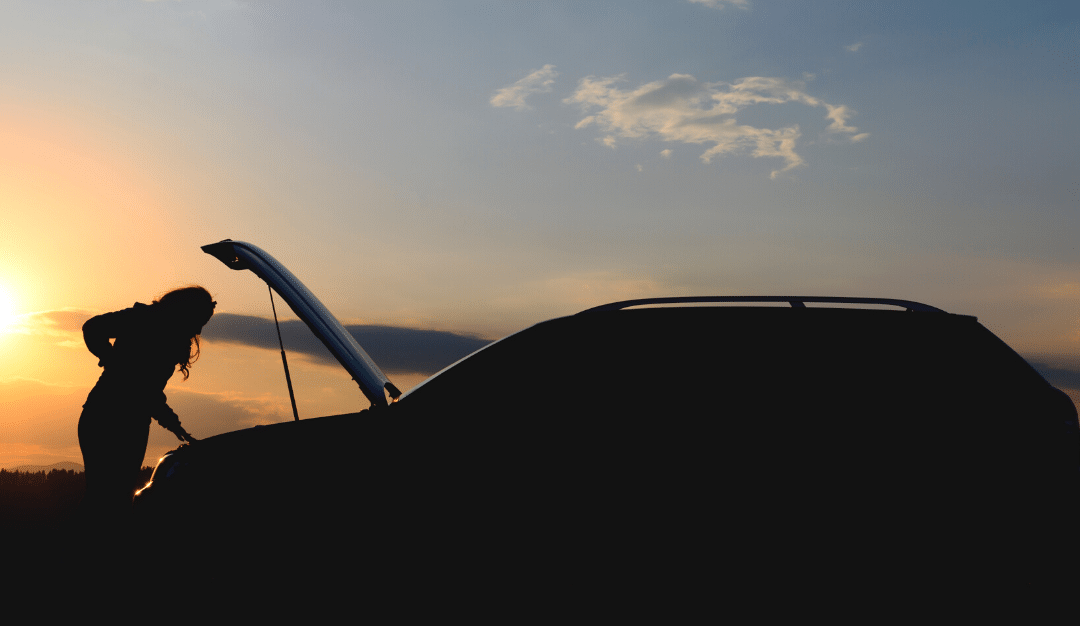
by California Casualty | Auto Insurance Info |
You depend on your car, and your car depends on regular maintenance to keep it running smoothly. But sometimes it’s tempting to skip routine maintenance or put it off because of the cost or the inconvenience of being without your car. Don’t.
These common vehicle mistakes could cost you big time down the road.
Mistake #1: Skipping basic tire maintenance
Your tires are the only parts of your car that make contact with the road and they do it for thousands and thousands of miles. That’s why even basic tire maintenance goes a long way.
Rotate your tires: Tires don’t wear evenly. The front tires usually have more wear on the outside edges, because they lean when you turn right or left. The front tires also hold the weight of the engine. To help your tires wear evenly, you need to rotate them every 5,000-7,000 miles.
If you don’t rotate them, your front tires will wear out more quickly and you’ll need to replace them thousands of miles sooner.
Align your tires: If you’ve ever taken your hand off the wheel while driving, and notice your car veering toward the side, you need an alignment. You need to align your tires to keep them pointing straight ahead. You can easily knock them out of alignment by going over a pothole.
If you don’t align your tires, you can experience steering problems, poor fuel economy, and uneven tire wear.
Check tire pressure: You should also regularly check the tire pressure. If yours is a newer vehicle, it comes with a Tire Pressure Monitoring System (TPMS) which helps you know when you’re low.
An underinflated tire will increase your risk of a blowout.
Mistake #2: Ignoring your fluids
Your car relies on engine oil, coolant, brake fluid, transmission fluid, and power steering fluid. Fluids deteriorate over time and can get dirty, making them less effective and even corrosive. It’s important for all of these fluids to be at the right levels so they can do their job.
Change the oil: Engine oil keeps everything lubricated, but it gets dirty over time. Changing the oil regularly is important. It used to be that we changed the oil every 3,000 miles but if you’re using synthetic oil, you can go longer. Check your vehicle recommendations for the timeframe.
If you don’t change your oil, it can become so dirty that it doesn’t work. That will cause your engine to overheat, blow a gasket or seize up.
Check the coolant: Coolant, or antifreeze, keeps your engine from overheating or freezing. If your temperature gauge is running high, it’s time for a coolant flush. You also might notice a maple syrup scent that occurs when your car is burning through coolant and needs a refresh. You should have your coolant system inspected regularly; check your vehicle’s maintenance schedule.
Your engine could overheat or blow a gasket, necessitating major repairs. Dirty coolant also can cause corrosion.
Check the brake fluid: Brake fluid can last for years. But sometimes moisture can get into the sealed system and impact your ability to brake and cause corrosion. Get your fluid checked every couple of years.
If you don’t maintain your brake fluid, your brakes may feel spongy and it may take longer to come to a stop. Your brakes could even fail.
Change the transmission fluid: Transmission fluid lubricates the gears, cools them, and helps provide hydraulic pressure to make them work. Whether you drive a vehicle with a manual transmission or one that’s automatic will depend on how often you need fresh transmission fluid. Check your vehicle’s maintenance schedule.
If you don’t change your transmission fluid, you will have difficulty shifting gears and your transmission could overheat.
Look for leaks in the power steering fluid: Power steering fluid helps you turn the wheel easily. As long as there are no leaks, and your car’s manufacturer does not suggest changing the fluid, you’re probably fine to leave it be.
If there is a leak, and your fluid dips down, it will be hard to steer. Parts of your steering system could corrode.
Mistake #3: Waiting too long to replace your brake pads
Brake pads apply pressure on the rotors, which is what ultimately slows and stops your vehicle. How fast they wear depends upon your driving habits, your car’s make and model, and other factors. You might notice signs of your pads wearing out, such as a squeaking sound or a clicking noise when you brake. The brake pedal may vibrate when you brake. Perhaps it takes you longer to brake. Don’t wait for weeks or months after the first warning signs.
Without good working brake pads, the whole braking system could overheat and fail. It also could cause damage to the rotors.
Mistake #4: Ignoring noises or dashboard warnings
Sounds serve as warning signals. That’s why if you hear something new or unusual when you’re driving, pay attention. Here’s what some common sounds could mean:
-
- Hissing – leak in the cooling system or the vacuum system
- Clunking over potholes or bumps – faulty, loose, or worn parts
- Howling – bad bearings or worn gears
- Knocking – valve clearances need to be adjusted or rod bearings need to be replaced
- Shrieking – serpentine belt may be slipping or need to be replaced
- Moaning or growling – failure of the power steering pump
- Metallic rattling or pinging – abnormal ignition
- Crunching – clutch issues in a manual transmission
Also, don’t ignore the dashboard warnings. Those lights are there to give you an early indication that something needs to be addressed.
Waiting too long to address a noise or dashboard indicator gives the problem a chance to become larger and more expensive.
Mistake #5: Not following your car’s maintenance schedule
The most important thing you can do is to follow your car’s maintenance schedule. This schedule is specific to your vehicle and will help to avoid costly repairs. It increases safety, helps maintain your vehicle’s value, and ultimately saves you time. Just as preventive care keeps you healthy, this maintenance schedule keeps your car operating at peak performance.
Not following your car maintenance schedule could void your warranty, and you’ll be responsible for the expensive repairs.
Your vehicle is an investment. Protect it with the right maintenance and the right insurance.
This article is furnished by California Casualty, providing auto and home insurance to educators, law enforcement officers, firefighters, and nurses. Get a quote at 1.866.704.8614 or www.calcas.com.
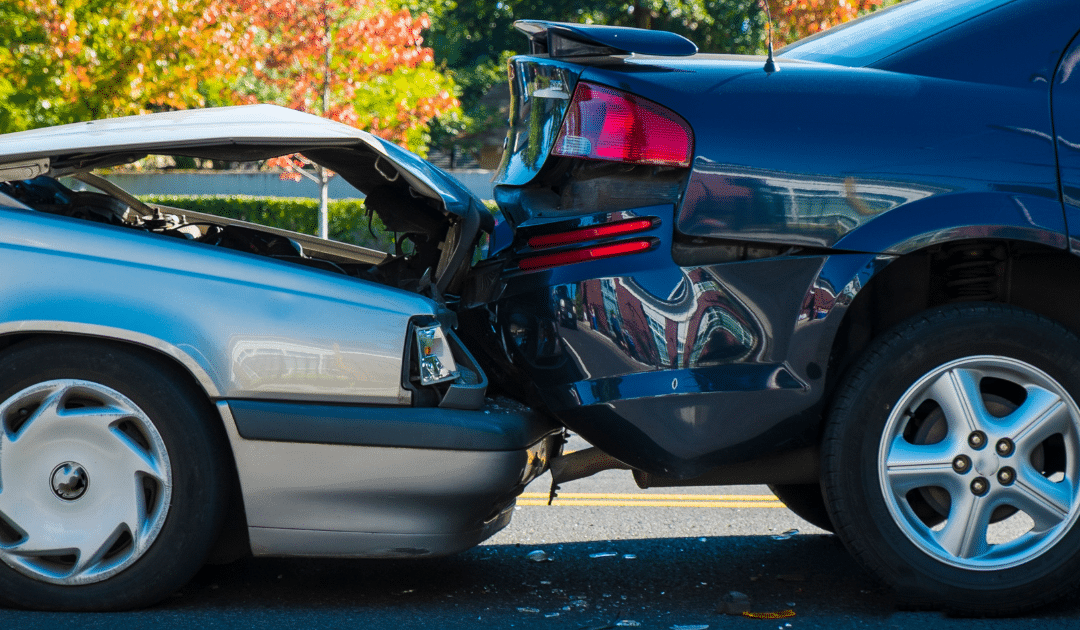
by California Casualty | Auto Insurance Info |
You got a new car—or a “new” used car. Now you have to figure out your car insurance. Here’s what you need to know about the most common types of auto coverage: liability and coverage for damage to your auto (comprehensive and collision).
Liability Coverage – What is it?
If you cause an accident, you are liable (responsible) for damages. Liability coverage is used to pay for those damages that you caused. Importantly, it does not cover any damage to your own vehicle; that’s covered by collision. It also does not cover injury to you and your family; it only covers the people in the other car. Liability coverage is required by law in most states.
There are two types of liability coverage:
-
- Bodily injury coverage helps pay for medical expenses, lost wages, and pain and suffering for the driver and passengers in the other vehicle.
-
- Property damage coverage helps pay for repairs for the other vehicle or for repair/replacement of property, such as a fence, damaged or destroyed in the collision.
We say “helps pay” because it depends on how much coverage you choose. The costs of an accident can be more than your insurance policy limit.
You choose a coverage limit.
Each state sets a minimum amount. The main goal of liability insurance is to protect your assets, and so you may choose a higher limit than the state specifies. You’ll want to take into account the amount of medical expenses that could be incurred in an accident. You could be responsible for lost wages for the driver. Even if he or she dies, you could be providing lost wages for the driver’s family.
Your insurance will only pay for the amount that you’ve designated. The rest comes from your pocket.
Example: Let’s say your liability limit is $50,000 per person. The driver of the car you hit has $40,000 in medical expenses. His passenger has $60,000. You would be responsible for paying $10,000 of medical costs for the passenger.
California Casualty offers a Package Discount where you may actually pay a bit less for carrying above state minimums and a discount if you carried 100/300 with your prior carrier. It doesn’t always cost a lot to bump up your coverage.
Most auto policies have three liability limits:
-
- Bodily injury liability limit per person
- Bodily injury liability limit per accident
- Property damage liability limit per accident
Limits are usually listed as follows: 30/60/15 describing $30,000, $60,000, and $15,000 of coverage respectively for bodily injury per person, per accident, and property damage. Some insurers offer a combined single liability limit that covers both bodily injury and property damage.
Liability coverage can protect you in a lawsuit.
The driver of the other car may decide to sue you. If that’s the case, your home and savings could be at risk. Liability insurance could help protect these assets by covering the cost of the lawsuit, lawyer’s fees and court costs.
Collision Coverage – What is it?
Collision coverage helps to pay to repair your vehicle or get one of equivalent cash value if yours is totaled. This applies both to accidents with other drivers and collisions with objects such as a fence or mailbox. It also covers vehicle rollovers. Unlike liability insurance, collision coverage is not usually required—unless you’re leasing a car or paying off a loan on a vehicle. However, it may be good to have.
-
- If you’re in a crash with another driver, and they were totally at fault, their property damage liability insurance will pay for your car’s repair or replacement.
- Your collision insurance kicks in if the other driver does not have enough property damage insurance—and if you don’t have underinsured (UI) or uninsured motorist (UIM) coverage.
- UI and UIM coverages are for injuries that you sustain if hit by an at-fault uninsured or underinsured motorist. You would either need to carry collision or uninsured motorist property damage (UMPD) coverage. This coverage often has a maximum limit (for example, $3,500). Most people carry one or the other but not both.
- If you were at fault in an accident, your collision insurance will cover the costs of your repairs.
Your coverage limit is the value of your car.
The maximum amount your insurance company will pay is the actual cash value of your car. If you total a used car, you’ll receive a total loss settlement that will go toward replacing your car.
With collision coverage, you will have a deductible. This is the amount that you have to pay out-of-pocket before your insurance kicks in. Choosing a higher deductible is one way to lower your insurance premiums. In most cases, you can’t buy collision-only coverage; you have to buy comprehensive coverage, too.
Comprehensive Coverage – What is it?
Comprehensive coverage is for damage to your vehicle other than collisions. Therefore, it’s not for accidents. It is for natural disasters, fires, vandalism, theft, and animals that damage your vehicle. Think of it as “bad luck coverage.” Comprehensive coverage is not usually required unless you’re leasing a vehicle or paying a car loan.
As with collision, your coverage limit is the actual cash value of your car.
Comprehensive coverage pays as much as the total value of your car—but not more. It makes sense to cover a new car. If your car is old and has little value, you may opt not to have comprehensive coverage. Just make sure if you do, that you have the funds available to repair or replace your car. With comprehensive coverage, you usually have a deductible. California Casualty does offer a policy with a zero deductible.
Do I really need comprehensive coverage?
Let’s say you have an old car, paid in full, that isn’t worth much. Car and Driver offers the following formula to determine If you need comprehensive insurance.
-
- Calculate your vehicle’s value.
- Subtract the deductible on your insurance policy.
- Subtract the cost of a six-month policy for comprehensive coverage.
- If you get a negative amount, it’s probably not worth it to continue to pay for this coverage.
Where you live may influence your decision.
If you live in a high-crime area, a wooded area with lots of deer, or a place with severe weather or flooding, you will want comprehensive insurance. It offers additional peace of mind for some likely scenarios.
Liability, collision, and comprehensive coverage are the main parts of a vehicle insurance policy. You can check the declarations page of your vehicle policy to see how much you are paying for each. For an overview of the car insurance you need, contact your insurance agent.
This article is furnished by California Casualty, providing auto and home insurance to educators, law enforcement officers, firefighters, and nurses. Get a quote at 1.866.704.8614 or www.calcas.com.
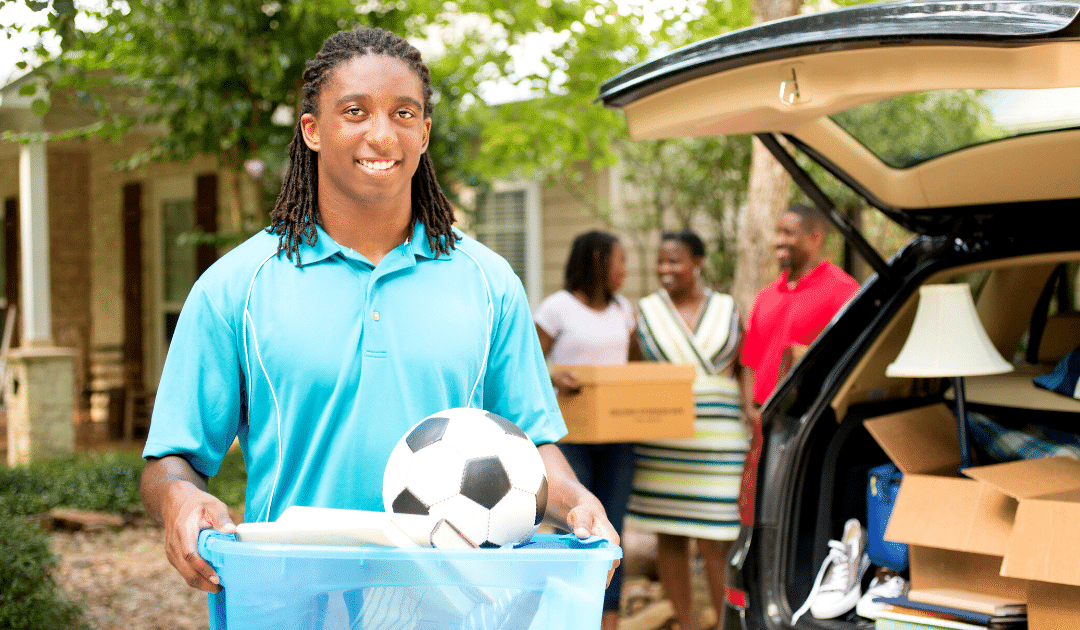
by California Casualty | Auto Insurance Info, Homeowners Insurance Info |
Your student is headed to college out-of-state – or across the state. It’s a milestone, and you’re helping them set up all of the necessary items associated with that big move, furniture, textbooks, food, cleaning supplies, etc.
In the midst of all of your preparation, don’t forget one of the most important items – insurance. Whether they stay on your policy or decide to get one of their own, you want to make sure your son or daughter is fully covered in terms of car and home/renters insurance.
Auto Insurance
Here are some common auto insurance questions for parents of college students.
My student won’t have a car away at school; do I still need to keep them insured?
Some students drive thousands of miles away so they can have their car with them, but others would rather keep their cars at home, and opt for flying in and using public transportation when they arrive. To avoid overcrowding, some schools even set limits on who can have cars on campus.
If your son or daughter will not have a car at college, you should still keep your student on your auto policy. This will avoid a lapse in coverage, and he/she may need to drive in an emergency and also will be coming home for breaks. (If your child has a car that will be kept at home and not driven while he/she is at school, ask your insurance company whether you qualify for a discounted rate.)
Do I need to change my insurance coverage to the state where the college is located?
Since college is not considered a permanent address, your student can keep his state driver’s license and the car may be registered and insured in your home state. However, you will want to check the insurance requirements where your student is attending college—and make sure that your state’s policy meets their minimum standards in the event of an accident. Either way, make sure that you notify the insurance company that the car will be kept in a different state so that they may update their records.
Should my student get his/her own auto policy?
As long as your son or daughter is still living with you, and you own the car he/she is driving, there is no need to get them their own car insurance, unless you would like to. There also is no specific age where you have to make that transition. A common time to switch to their own policy is when young adults move from the family home to their own first apartment.
If your student is living off-campus, and maintaining that address year-round, you may consider a separate auto policy.
Are there any discounts that we qualify for?
Your student may qualify for a good student driver discount, available from many insurance companies with proof of grades. Ask your insurance agent for other discounts that may be available.
Don’t forget! If your student is enrolled in school full time, was a resident of your household before moving out to attend school, and is a relative 24 years or younger or 21 or younger and in your care, your California Casualty homeowner’s policy offers the personal property protection they need as well.
Whether your child stays in a dorm on campus or resides in a leased residence off-campus, 10% of your homeowner’s personal property coverage (coverage c) extends to their possessions while they are away. If you believe they need more than that 10% coverage – for expensive musical instruments or computer equipment – then consider adding a scheduled personal property endorsement to your policy. With computers, tablets, smartphones, gaming systems, furniture and clothes, you would be spending thousands of dollars to replace your student’s possessions without this layer of protection.
You can’t be with them at college, but you can still protect them—with the right insurance.
This article is furnished by California Casualty, providing auto and home insurance to educators, law enforcement officers, firefighters, and nurses. Get a quote at 1.866.704.8614 or www.calcas.com.
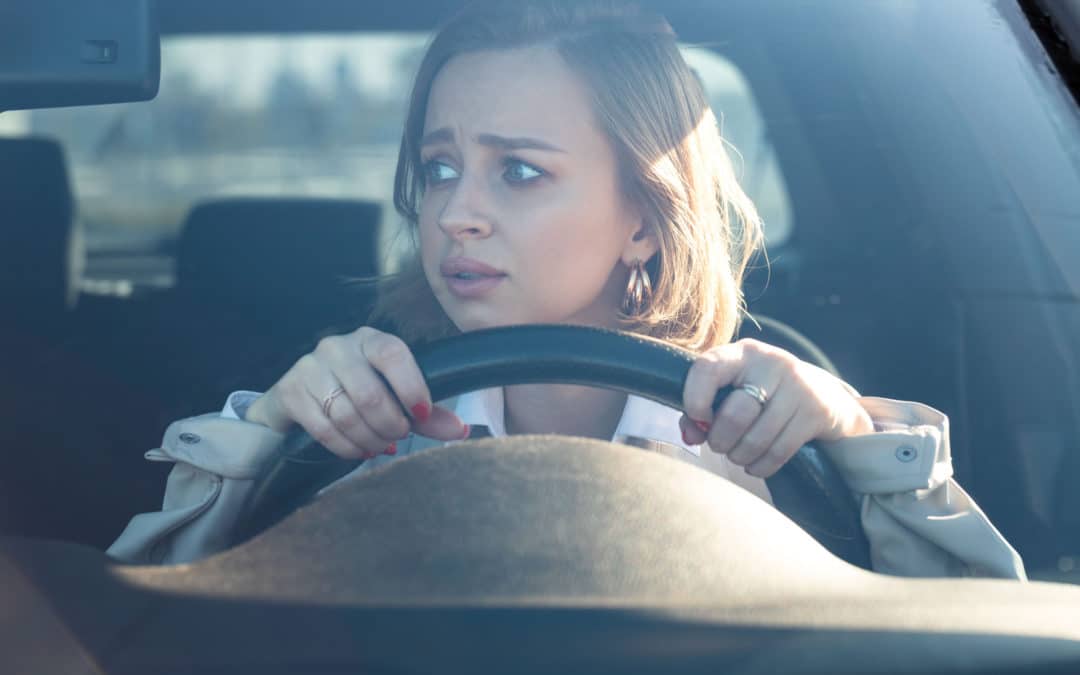
by California Casualty | Auto Insurance Info |
It’s tempting to look when you drive by an accident. You slow down and glance back, taking your eyes off the road for a brief moment. It’s a practice called rubbernecking, and it is a form of distracted driving.
The term rubbernecking dates back to the late 1890s, to describe people who turned their heads to listen to other people’s conversations. By the early 1900s, rubbernecking was used to describe tourists striving to see everything from their seats in wagons, cars, and buses. Today, it is a term for motorists who slow down, craning their necks to see an accident, usually on the other side of the road.
Why do we rubberneck?
Blame it on our natural curiosity. Those flashing lights attract our attention. We may be concerned about the people involved in the accident. We want to find out what’s going on. We can’t seem to look away, a reaction that may be tied to our fight-or-flight instinct. Our brain is evaluating the threat.
While rubbernecking may be a natural response, it is not a safe one. Here’s what you need to know about rubbernecking, including how to keep yourself safe on the road.
Rubbernecking…
Is distracted driving.
-
- A glance away of just 5 seconds when you’re traveling 55 mph means you have traveled the length of a football field without looking at where you were going!
Delays your response time.
-
- When you take your eyes off the road, you miss seeing brake lights, traffic lights, and pedestrians. By the time you see them, it may be too late to avoid a car accident.
Causes accidents.
Can also cause traffic jams.
-
- Rubbernecking starts a chain reaction of braking, which slows everyone down even though there is no real barrier on the road ahead.
Tips to Prevent Rubber Necking
Follow these steps to keep you and your passengers safe.
-
- Keep your eyes on the road. Resist the urge to look.
- Turn on your blinkers so cars behind you know you are slowing down.
- Ask your passengers to refrain from rubbernecking or taking photos or videos of the accident. Their movements in the car to get a good picture could cause added distractions or a blind spot for you, the driver.
- Be extra careful driving by a crash. Know that other drivers may not be paying attention because they’re rubbernecking.
- If you don’t have to be on the road during busy times, you may be able to avoid the holiday traffic and the potential for rubbernecking.
Using crash screens can also help reduce rubbernecking. A University of Florida study found that screens that blocked the view of an accident were effective in reducing rubbernecking.
We are still in the 100 Deadliest Days, so remember as you get on the road this summer, travel safely. And if you see an accident, try your best to keep your eyes on the road ahead.
This article is furnished by California Casualty, providing auto and home insurance to educators, law enforcement officers, firefighters, and nurses. Get a quote at 1.866.704.8614 or www.calcas.com.






